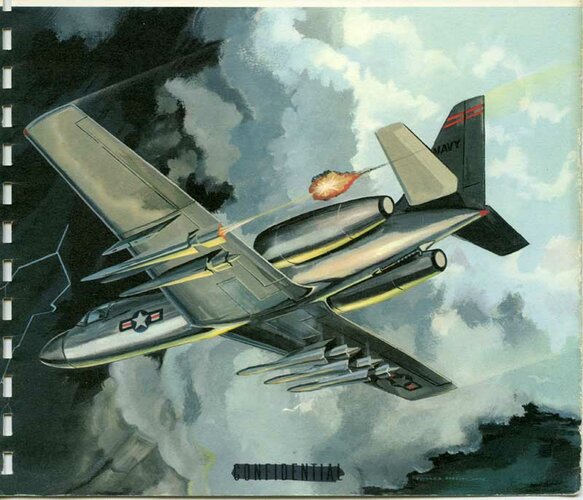Proposals under a Navy Bureau of Weapons competition for a subsonic missileer carrier-based aircraft, which probably will carry six Eagle air—to—air
interceptor missiles, are due Feb. 29. Bids probably will be submitted by at least eight companies, including Douglas, Chance Vought, Grumman, McDonnell, Boeing-Wichita, Bell, Convair and North American. Navy has not established detailed specifications, is leaving it to industry to propose the best solutions to the problems at hand. Limit of 50,000 lb. gross is generally applicable, and turboprop and fan-type turbojet powerplants are favored. Modified existing aircraft which may be considered include the Grumman A2F, whose rollout is scheduled for next spring, the Grumman W2F and the Douglas A3D.











